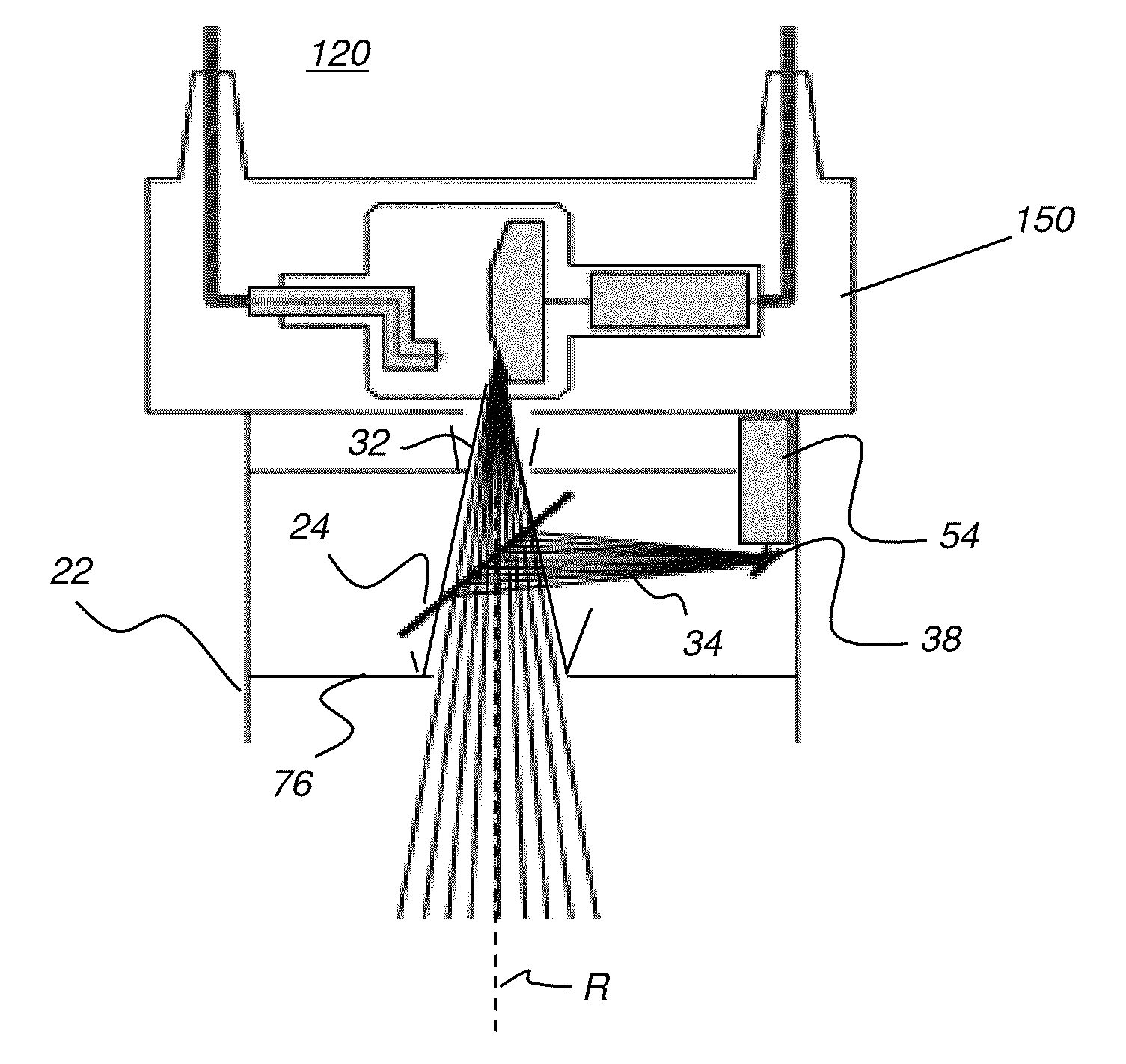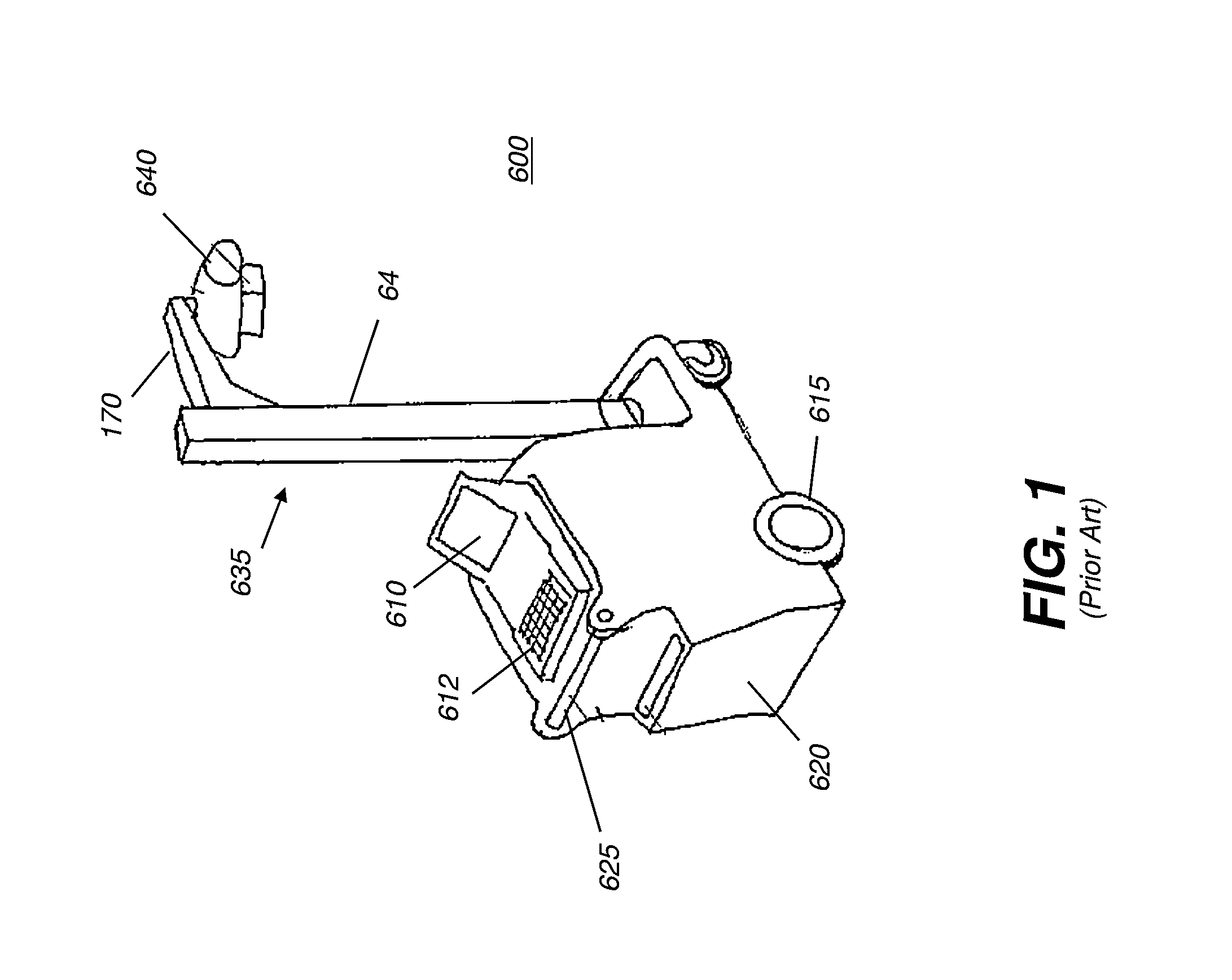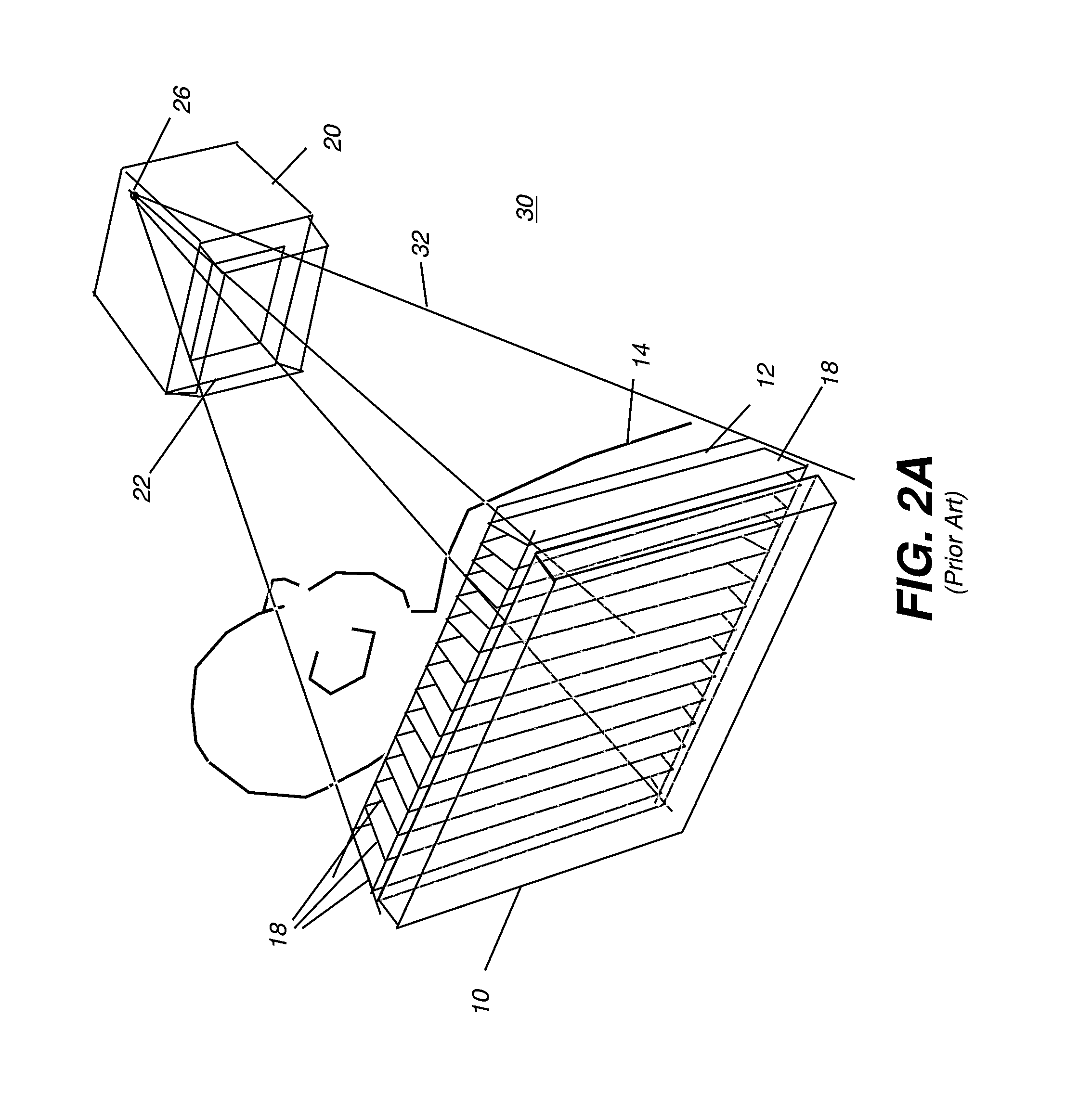Projector as collimator light
a collimator and projector technology, applied in the field of radiographic imaging, can solve the problems of difficult to effectively use a grid for reducing the scattering effect, the receiver itself may not be visible to the technician, and complicate the alignment task of portable systems, so as to improve the setup and operation of the x-ray system
- Summary
- Abstract
- Description
- Claims
- Application Information
AI Technical Summary
Benefits of technology
Problems solved by technology
Method used
Image
Examples
Embodiment Construction
[0046]The following is a description of exemplary embodiments of the invention, reference being made to the drawings in which the same reference numerals identify the same elements of structure in each of the several figures.
[0047]In the context of the present disclosure, the term “imaging receiver”, or more simply “receiver”, may include a cassette that has a photostimulable medium, such as a film or phosphor medium, for example, or may include a detector array that records an image according to radiation emitted from the radiation source.
[0048]As used herein, the term “energizable” indicates a device or set of components that perform an indicated function upon receiving power and, optionally, upon receiving an enabling signal.
[0049]The perspective schematic view of FIG. 2A shows components of a radiographic imaging apparatus 30 in which a radiation source 20 emits a radiation beam 32 that is shaped by a collimator 22 and directed toward a patient 14. A receiver 10 positioned behin...
PUM
 Login to View More
Login to View More Abstract
Description
Claims
Application Information
 Login to View More
Login to View More - R&D
- Intellectual Property
- Life Sciences
- Materials
- Tech Scout
- Unparalleled Data Quality
- Higher Quality Content
- 60% Fewer Hallucinations
Browse by: Latest US Patents, China's latest patents, Technical Efficacy Thesaurus, Application Domain, Technology Topic, Popular Technical Reports.
© 2025 PatSnap. All rights reserved.Legal|Privacy policy|Modern Slavery Act Transparency Statement|Sitemap|About US| Contact US: help@patsnap.com



